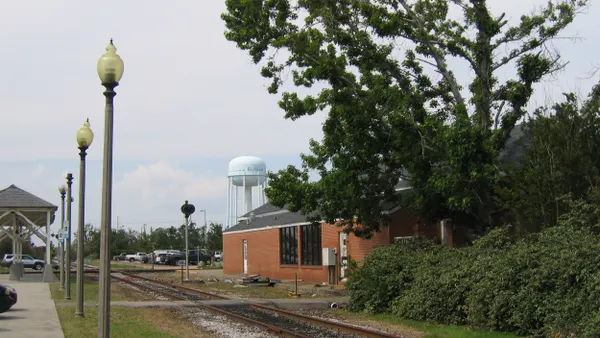For hundreds of years, cities have attracted people with the promise of building a better life. The density of urban populations guaranteed access to more economic and social opportunities, which only grew with the development of public transit systems. People could quickly travel from one part of a city to the other in search of better education, employment, health care or entertainment.
While all of this will likely remain true in the cities of the future, public transit can also play a new role in helping to create greater social equity.
According to a report by McKinsey Global Institute, one-third of the global population has no connection with secure banking services. Bringing more people into the financial system is a major goal for global leaders and the development community.
Providing people access to bank accounts and new payment options can open the door to improving their quality of life. "Financial inclusion starts with payments," states the World Bank's Committee on Payments and Market Infrastructures. "They serve as a gateway to other financial services, such as savings, credit and insurance."
Access to More Payment Options Supports Financial Inclusion
In recent years, numerous cities worldwide have introduced unbanked or underbanked residents to financial services through another payment ecosystem they are already familiar with—transit payments.
For example, in Ho Chi Minh City, Vietnam, Visa assisted with a project to use open-loop, pre-paid Visa cards to help unbanked people ride public transit. The project gave 5,000 pre-paid cards to people near four bus stations in a university town to get users familiar with the system and provide them with an entry point to financial institutions. "Our Visa prepaid cards issued in Ho Chi Min City have empowered many unbanked riders to take their first step towards digital payments while reducing the cost of ticketing and increasing ridership," said Ho Phan Hai Trieu, the deputy CEO of VietBank.
In another part of the world, Cash App and Visa are working with transit agencies in cities across California, including Monterey-Salinas Transit (MST) and Sacramento Regional Transit District (SacRT), to offer the "Cash Card" as a way for riders to pay for bus and light rail fare. For those riders who do not have a bank card, the Cash Card is a free, customizable and contactless-enabled Visa debit card offered through Cash App, which allows passengers an easy way to pay for their rides. The Cash Card also has a rewards program called Boost which offers instant discounts at select retailers. Customers can also deposit paper money into their Cash App accounts at participating retail locations.
In addition, working with partners like Visa and the California Department of Transportation (Caltrans), MST instituted fare-capping on its fleet of buses, ensuring riders won't pay more than a specified limit per day no matter how many times they ride— allowing passengers to forgo prepaying for a month's worth of rides to get the best fare.
"As transportation services providing mobility to all, public transit agencies have a responsibility to serve every Californian," said Gillian Gillett, California Integrated Mobility Program Manager at the California Department of Transportation. "Access to reliable and affordable transportation is essential to address poverty, unemployment, health and wellness, education and other pressing social issues. Contactless transit payments, which we are helping to power through our work with partners like Visa and others, are critical to making public transportation easy to use and cost-effective, enabling transit to serve an important role in providing mobility to everyone in the community—especially those who are most vulnerable."
Other cities across the U.S., including New York, Portland, Dallas and Santa Barbara, have introduced contactless payment options on their transit systems, helping give everyone more options into how they pay for their fares.
Smart Fare Options Improve Equity
By design, open-loop, contactless payment systems are simple for riders and provide an opportunity for passengers to use whatever payment method they already prefer in their daily lives.
Anything that acts as a barrier to using public transportation networks, including cost or complexity, can disenfranchise people and hinder the development of thriving cities. That's one of the reasons why hundreds of transit agencies around the globe are implementing open-loop, contactless payments.
Visa's Mobility & Transport Transaction (MTT) model, is key to bringing this to life. MTT is a global standard, enabling operators to offer a range of flexible fares, including fixed fares, distance- and time-based fares, multi-modal fares and features like fare capping. The MTT model goes beyond providing a fast and convenient experience for the rider, as it offers efficient fare collection for the operator as well.
The smart cities of tomorrow will optimize public transit to move people efficiently and engage all residents in economic opportunities. Digital payment options that help reduce barriers to accessing transportation systems are pro-people innovations. They make transportation easier and more pleasant to use, provide more accessible mobility to all riders, and help improve ridership across demographics. Equity and financial inclusion are increased by giving riders more options in how they want to pay, not requiring a specific card or app to ride and allowing passengers to use what works best for them.










